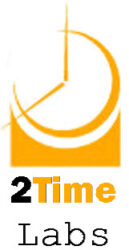Now and then I ask myself “Why?”
Why do I have this blog devoted to time management and productivity? Why do I spend time coming up with new ideas every now and then, so that I can share them and hopefully turn them into ideas that make it into a class, a webinar or my consulting work?
I struggle a bit with the explanation, partly out of a fear of sounding too Pollyana-ish. If I could put together a trite explanation… that’s it all about becoming dirty, filthy rich…. if I could leave it at that, I suppose many would nod and understand. But then, I’d look foolish for giving away most of what I do for free.
I took a couple of MBA classes while I was at Cornell, and this just isn’t a great strategy, according to that kind of thinkingh. I have been giving away almost everything for free, long before the book “Free” came about, and while the book helped me feel like I wasn’t alone, or crazy, it’s only added some capitalist logic to the fun I was already having tinkering with time management concepts.
At the moment, for example, I have nothing for sale on my website at all, and in 2010 I have only had a single product for sale for about 2 weeks (MyTimeDesign2.0.Professional.)
Not that that troubles me.
While I sometimes wish that I could make a living from this peculiar pursuit, it’s not what gets me up in the morning.
Instead, I think I like three things about what I do here on the 2Time blog, in the NewHabits-NewGoals programs and in MyTimeDesign.
The Challenge
I don’t know exactly why, but I am convinced that millions of working people around the world are trying to be more productive than they already are, not because the boss demands it necessarily, but because their aspirations require it. For example, many people are trying to lost weight, start their own small business, get more education or spend more quality time with their families and they know that a simple improvement in how they manage their time will give them “more.”
They also know that time is one of those commodities that cannot be reclaimed, and that the older they get, the more this rings true in their experience.
As far as I can tell, these concerns transcend nationality, race, gender or any of the categories that we use to distinguish human beings from each other. The idea that I could solve it for so many people thrills me each and every day — after all, I am working to solve a problem that my colleagues here in Kingston, Jamaica, and my fellow human beings in Kuala Lumpur, Malaysia, are all struggling with.
What’s at stake is nothing more than our quality of life.
What pisses me off is that all the books/websites I have read on the topic don’t deal with some basic truths:
- we all have (and need) unique approaches to managing our time
- we each have something that is working for us right now (to some degree)
- time management is all about habits, and it’s hard for humans to change habits
- to expect someone to toss out their current habits and adopt a bunch of new ones -in an instant – is unrealistic
- the vast majority fail to implement new systems even when they try very, very hard
- no-one knows how to measure the quality of an individual’s time management system
These truths might be called the “hidden secrets” of the time management industry, and they must be the starting point of everyone who is serious about helping people to become more productive. To my mind, they are inescapable.
To add fuel to the fire, time management as an academic topic doesn’t have a proper home, and has, tragically, fallen through the cracks. It’s a severely under-researched topic, and while it impacts every single working person on the planet in a profound way, there isn’t a single conference, journal or academic department in a major university that focuses on it (that I am aware of.)
Four years ago when I went looking to upgrade my own productivity system, I was appalled to find such a lack of depth in such a critical topic that impacts so many people. As far as I can tell, little has changed since then.
Tinkering
As an 18 year old looking for a field of study, I was attracted to Industrial Engineering/Operations Research because of its dual emphasis on people and logical, fact based thinking. Today, I love to tinker with technology, but not at the “lines of code” and “circuit board layout” levels. Instead, I like to solve human problems with good technology.
This might be the reason why I have been so focused lately on the ways in which smart-phones have actually been destroying productivity.
But I should be more rigorous… smart-phones are great, but there is something weird (and un-hygienic) about the fact that some 50% of Americans have no problem using their smart-phones in the bathroom.
It’s a case of technology actually enabling us to hurt ourselves, via the bad habits that we adopt.
Today I spent some time tinkering with Microsoft Outlook, the most popular program of its kind by far. Back in the 1990’s, it was born as an email program, and it’s evolved over the years into an almost-ubiquitous productivity program.
This doesn’t seem to have happened by design, but instead, by accident. Outlook is being used for a purpose that far exceeds its original design and over the years, little has changed.
Tinkering with Outlook’s is something that I would simply LOVE to do!
Now I know that that is not everyone’s cup of tea, but I have dreamed of reshaping Outlook’s design so that users see it as a productivity center that pulls them into a powerful day each day, rather than “a place to check their email.” (Gmail, Yahoo and AOL Mail are also good candidates for complete re-design.)
I fully expect that in the future someone will bring some high quality, Apple-like design to this particular problem — I’d enjoy being a part of an effort like that. (Unfortunately, so far I can’t find anyone interested in solving this particular problem.)
The Result
At the end of the day, however, I like to see results, even if someone else produces them, or gets the credit. The kind of results I have in mind are a world in which:
- each person has their own way of managing their time
- their time management approach works for them, and they know how to fix it or upgrade it when it stops working
- technology tools are useful, and new technologies are built around users’ needs, and are adapted by users with good insight on how to use it to enhance their time management systems
- there is an easy way to measure the progress of each person’s productivity
- time management is a body of knowledge that is taught to 10 year old’s
Like most people, I want to know that what I’m working on makes a solid contribution, and I truly believe that most of the things I focus on in the 2Time blog are unavoidable. For example, there must come a time when we realize en masse that it’s crazy to expect that people will teach themselves the fundamentals of time management. It’s just as crazy to think that there is one perfect system for everyone, now and for all the years to come. It’s also crazy to think that people can change a number of ingrained habits in an instant, when all the research tells us otherwise.
I think that people will come to understand these truths for themselves, and start to pass them on to younger generations, so that they can benefit earlier in their careers.
I guess I’m hoping that I’ll be able to help to make that day come just a little bit quicker.
 Start with managerial anxiety. Add in some new technology in the form of smartphones. Toss in some employees that don’t know how to say no.
Start with managerial anxiety. Add in some new technology in the form of smartphones. Toss in some employees that don’t know how to say no.




